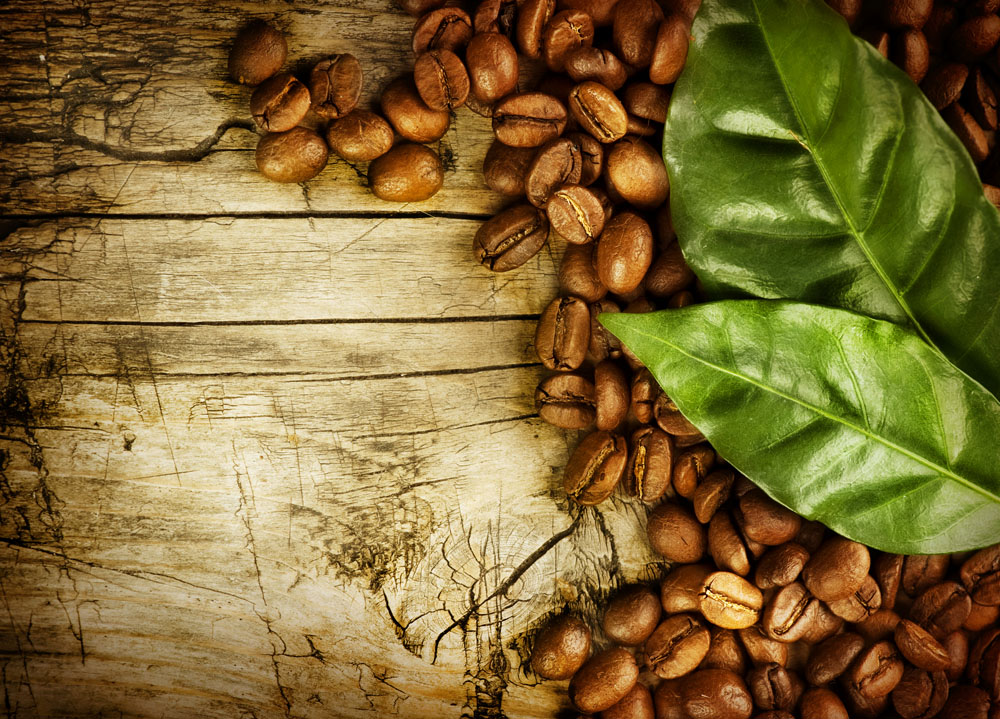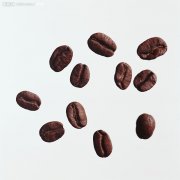Roasting defects Fast baking freshly baked coffee beans coffee quality coffee raw beans
When we talk about boutique coffee, every step presented in the coffee supply chain is critical to the final coffee product presented to us. So a very important step in the supply chain of coffee from seed to cup is roasting.
When it comes to specialty coffee, every step in the supply chain becomes extremely important in creating the final product that we enjoy as a cup of coffee. One hugely important step in the chain of coffee from seed to cup, is roasting.
On the surface, coffee roasting seems to be a simple process. Bring coffee to raw beans, add some calories, and you will have roasted coffee beans in a few minutes. Perhaps for some companies and customers who do not invest time to enjoy more elaborate and complex coffee roasting methods, that is coffee roasting, but for professional coffee masters and customers, the roasting process will pay more attention to detail and require more investment.
Roasting coffee, on the surface, seems like a simple enough process of taking a green coffee bean, adding some heat, and in a few minutes you have roast coffee. While the process may be just that simple for some companies and consumers who don't take the time to enjoy the finer, more complex aspects of coffee, for specialty coffee craftsmen and consumers the process is much more detailed and involved.
Coffee beans undergo many different chemical and physical changes in the process of roasting, and many of the effects of these changes on the final coffee quality are still not fully understood. Some factors that affect coffee roasting (to name just a few) include: air flow, heat source, temperature rise rate, drum speed (for baking drum), fan speed, end temperature and cooling time.
In the process of roasting, there are so many variables that affect the quality of coffee to control and manage, it is not surprising that every year, so much coffee will be overroasted, underbaked or baked defects due to some other factors.
During the roasting process the coffee bean undergoes so many different chemical and physical changes that many are still not fully understood as to their impact on the coffee's final quality. Some of the factors affecting the roast include airflow, heat source, rate of temperature rise, drum speed (for drum roasters), fan speed, ending temperature and cooling time, just to name a few.
With so many different variables to control and monitor during roasting that impact the quality of the roast, it's no wonder that so many batches of coffee are (tragically) over-roasted, under-roasted or meet some other fate as a roasted defect each year.
There are many different baking flaws that can occur, but some of the most common include: baking, top burning, broken beans, local burning and fast baking. You can see these factors listed in the inappropriate baking section of the coffee flavor wheel of the old American Fine Coffee Association.
There are many different kinds of roast defects that can occur, but some of the most prevalent include: baking, tipping, chipping, scorching, and fast roasting. You can see a few of these listed on the old version SCAA's Coffee Taster's Flavor Wheel under Improper Roasting.

Baking Baking
Baking may occur in some aspects of the baking process. It may be due to the low temperature during baking. So the exact roasting is in the standard roasting time of the entire coffee for 12 minutes, and the temperature rise is 1-2 degrees Celsius per minute (here we only talk about sample baking).
If the rate of increase in temperature per minute at any heating point in the process of baking does not rise but decreases, it is usually called baking. This usually happens near an explosion, and in order to prevent the beans from overbaking, the baker will turn down the heat source, either cool down quickly or keep the temperature low for a long time.
In the case of baked beans, the surface color usually looks like standard baking, but the inner color of the bean will not match the external color of the bean. Relatively speaking, the internal color of standard baked beans should be 5 points lighter than the Agtron value. Compared with standard roasted coffee, roasted coffee will taste very monotonous, boring, and may have a taste similar to cereal or bread.
Baking can occur at a few places during roasting. It can occur from too low of heat applied throughout the roast, thus actually baking the coffee by only increasing the temperature 1-2 degrees per minute for a total roast time of well over the standard 12 minutes (talking about sample roasting).
Usually people will also call a roast baked if at any point during the roast the rate of rise per minute either doesn't increase or actually drops. This usually happens near first crack when, in order to keep the beans from over-roasting, the roaster will lower the heat source and either lower it too far or keep it lowered for too long. Baking the roast will usually create a bean that on the outside looks like a standard roast, but the inside color of the bean will not match the outside, which for a standard roast the inside color should be around 5 points lighter using the Agtron scale.
A bakes cup will typically taste very flat and dull compared to a standard roast of the same coffee, and can also have grain or bread-like flavor notes.
Top scorch
Top scorching usually occurs in a process called violent baking, or when too much heat is absorbed too quickly. Near the germ at the top of the bean, it will burst, leaving a dent in the end of the bean. Charred coffee at the top usually tastes like skunks or cereals.
Tipping usually happens during what's called a violent roast, or when too much heat is applied too quickly. The tip of the bean, near the embryo, bursts leaving a dark indention on the end of the bean. Tipped coffee will usually have a skunky or cereal-like flavor.
Cracked bean
Cracked beans are similar to charred beans at the top and appear in the process of intense roasting, especially in deep-roasted coffee. When the most fragile film of the bean cannot withstand the pressure, the water inside the bean begins to evaporate, which explodes and ruptures on the surface of the bean. Don't be confused by the scorched top. Cracked beans usually appear on the round surface of beans. Cracked beans do not produce flavor defects themselves, but they are often found in deep-roasted coffee. So the coffee will have a charred, carbon-like flavor.
Chipping is similar to tipping in that it occurs during violent roasts and is more prevalent in dark roasted coffees. Chipping happens when the moisture level in the bean begins evaporating at such a rate that the weakest point of the bean membrane can no longer contain the pressure, bursting and creating a chip on the surface of the bean. Not to be confused with tipping,chipping usually occurs on the rounded surface of the bean. Chipping creates no flavor defect of its own, but almost always happens in dark roasted coffees, therefore the coffee will have dark, char-like flavor notes.
Local coke burning
The appearance of local scorch is based on the control temperature of the drum which is too high. The temperature control is based on the temperature at which the baker puts the raw beans in the drum at the beginning of the baking. Because of the higher temperature, the surface of raw coffee beans is usually partially scorched. Leave black spots on the surface of the beans.
Based on the darker and darker color of the coffee, you may not be able to see the black spots on the last baked beans, which means that local scorching is sometimes difficult to detect. Partially charred beans will smell of burnt dust in the coffee.
Scorching occurs due to having too high of a drum charge temperature. Charge temperature refers to the temperature at the beginning of the roast when the roaster places the green coffee inside the drum. Because of the high temperature, the surface of the green coffee will actually become scorched, leaving black marks on the surface of the bean.
You may or may not be able to see the marks clearly on the final roasted bean due to the darker color of the coffee, meaning scorching is sometimes harder to detect. The scorching creates a charred or ash-like flavor in the coffee.
Fast baking
Fast baking is simple and occurs when the baker bakes beans too fast. This occurs when too many calories are absorbed and the heating rate is so fast that the coffee does not have enough time to develop well during the roasting process. The surface of the beans will look like a standard baked color, but the internal color of the beans is very light and a little underdeveloped.
In many cases, fast baking, due to too fast heating, will also lead to too dark color. In this way, the over-roasted surface of the coffee beans will produce a mixed smell of carbon and dust, while the inside of the beans will also have the smell of underdeveloped hay or grass.
A fast roast is simply that, when a roaster roasts the coffee too quickly. This happens when too much heat is applied and the rate of rise is so high that the coffee doesn't have time to fully develop during the roast. The outside surface of the bean will look like a standard roast color, but the inside of the bean will be light and underdeveloped.
Many times fast roasts, because of the rapid heating, will also be taken too dark. This creates a combination of char and ash flavor from the over-roasted surface of the bean and under-developed hay or grass-like flavors from the inside of the bean.
The baker sent a message:
As there are too many variables to consider and control in the process of coffee roasting, it is also necessary to be a roaster of fine coffee. So we have to constantly learn and explore these issues and pay attention to these variables, so that we can make the best quality coffee, cherish the hard work of all the coffee farmers and the participants who bring coffee to roasting in the coffee supply chain, and then provide the products that can really be called boutique coffee to the majority of consumers.
Because of the amount of variables to control and issues that can occur during coffee roasting, it's imperative as specialty coffee artisans, that we educate ourselves on these issues and are aware so that we are able to craft the finest coffee quality possible, passing along all of the hard work of the farmers and everyone who has brought the coffee to this point in the supply chain, and deliver what can truly be called specialty coffee.
Important Notice :
前街咖啡 FrontStreet Coffee has moved to new addredd:
FrontStreet Coffee Address: 315,Donghua East Road,GuangZhou
Tel:020 38364473
- Prev

Crema Roberta Coffee in Coffee degree of extraction evenness of extraction Italian concentration
Crema can at least tell us the following information: 1, whether the coffee is fresh: a large number of Robosta beans allow us to see a lot of foam, so we can't judge the freshness of coffee by the speed at which the foam disappears. Fresh coffee will appear very crema throughout the production process (that is, when coffee comes out, it looks like Coke), only in large quantities
- Next

How to judge the quality of dregs coffee machine espresso espresso with coffee beans
We all know that it takes water to make espresso. The water is heated by a boiler and drenched vertically from the top of the pressed powder. When you press the outlet button, the water will continue to flow out and fill the gap between the pressed powder and the outlet. Only after the gap is filled will the water begin to gradually go deep into the pressed powder and begin to extract.
Related
- Beginners will see the "Coffee pull flower" guide!
- What is the difference between ice blog purified milk and ordinary milk coffee?
- Why is the Philippines the largest producer of crops in Liberia?
- For coffee extraction, should the fine powder be retained?
- How does extracted espresso fill pressed powder? How much strength does it take to press the powder?
- How to make jasmine cold extract coffee? Is the jasmine + latte good?
- Will this little toy really make the coffee taste better? How does Lily Drip affect coffee extraction?
- Will the action of slapping the filter cup also affect coffee extraction?
- What's the difference between powder-to-water ratio and powder-to-liquid ratio?
- What is the Ethiopian local species? What does it have to do with Heirloom native species?

